Last update:
Planetary Sciences news

NASA Mars rover captures rock that could hold fossilized microbes
NASA's Perseverance Mars rover has made what could be its most astonishing discovery to date: possible signs of ancient life on the Red Planet.
Planetary Sciences
10 hours ago
0
32

Spacecraft to swing by Earth, moon on path to Jupiter
A spacecraft launched last year will slingshot back around Earth and the moon next month in a high-stakes, world-first maneuver as it pinballs its way through the solar system to Jupiter.
Space Exploration
10 hours ago
0
34

Is this how you get hot Jupiters?
When we think of Jupiter-type planets, we usually picture massive cloud-covered worlds orbiting far from their stars. That distance keeps their volatile gases from vaporizing from stellar heat, similar to what we're familiar ...
Planetary Sciences
Jul 26, 2024
0
43

How solar storms play havoc with our lives
Despite the 150 million kilometers that separate it from the Earth, the sun does more than just light our way: it also impacts our electricity networks, and even our transport.
Planetary Sciences
Jul 26, 2024
0
38
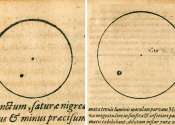
Kepler's 1607 pioneering sunspot sketches solve solar mysteries 400 years later
Using modern techniques, researchers have re-examined Johannes Kepler's half-forgotten sunspot drawings and revealed previously-hidden information about the solar cycles before the grand solar minimum.
Planetary Sciences
Jul 26, 2024
0
81

Perseverance rover discovers rock with potential signs of ancient life
A vein-filled rock is catching the eye of the science team of NASA's Perseverance rover. Nicknamed "Cheyava Falls" by the team, the arrowhead-shaped rock contains fascinating traits that may bear on the question of whether ...
Astrobiology
Jul 25, 2024
0
244

A pair of CubeSats using ground penetrating radar could map the interior of near-Earth asteroids
Characterizing near-Earth asteroids (NEAs) is critical if we hope to eventually stop one from hitting us. But so far, missions to do so have been expensive, which is never good for space exploration.
Planetary Sciences
Jul 25, 2024
0
5

Image: A Saturnian summer
NASA's Hubble Space Telescope captured this image of Saturn and its colossal rings on July 4, 2020, during summer in the gas giant's northern hemisphere. Two of Saturn's icy moons are also clearly visible: Mimas at right, ...
Astronomy
Jul 25, 2024
0
52

What lunar caves tell us about the shared origins of the Earth and the moon
Using radar, a Nasa spacecraft, Lunar Reconnaissance Orbiter (LRO), has confirmed the existence of caves beneath the lunar surface. Here's why such geological features will be key for establishing a base on the moon, and ...
Planetary Sciences
Jul 25, 2024
0
51

Geoscientists narrow timing of enormous 'magmatic event' on the moon more precisely
A team of geoscientists affiliated with several institutions in the U.S. and Switzerland has more precisely dated an enormous "magmatic event" that occurred on the moon several billion years ago.

Carbon oxides on Uranus' moon Ariel hint at hidden ocean, Webb telescope reveals
The surface of Uranus' moon Ariel is coated with a significant amount of carbon dioxide ice, especially on its "trailing hemisphere" that always faces away from the moon's direction of orbital motion. This fact presents a ...
Planetary Sciences
Jul 25, 2024
0
77
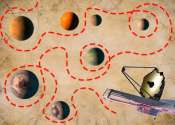
Roadmap details how to improve exoplanet exploration using the James Webb Space Telescope
The launch of NASA's James Webb Space Telescope (JWST) in 2021 kicked off an exciting new era for exoplanet research, especially for scientists looking at terrestrial planets orbiting stars other than our sun. But three years ...
Planetary Sciences
Jul 24, 2024
0
110

Producing oxygen from rock is harder in lower gravity, modeling study shows
One of the challenges engineers face when developing technologies for use in space is that of different gravities. Mostly, engineers only have access to test beds that reflect either Earth's normal gravity or, if they're ...
Space Exploration
Jul 24, 2024
0
34

The ultraviolet habitable zone may set a time limit on the formation of life
The field of extrasolar planet studies has grown exponentially in the past 20 years. Thanks to missions like Kepler, the Transiting Exoplanet Survey Satellite (TESS), and other dedicated observatories, astronomers have confirmed ...
Astrobiology
Jul 24, 2024
0
42

NASA's ICON mission ends with several ionospheric breakthroughs
After contributing to many important findings on the boundary between Earth's atmosphere and space, the Ionospheric Connection Explorer (ICON) mission has come to an end. ICON launched in October 2019 and after completing ...
Planetary Sciences
Jul 24, 2024
0
28
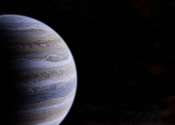
Webb images nearest super-Jupiter, opening a new window to exoplanet research
Using the James Webb Space Telescope (JWST), an MPIA-led team of astronomers imaged a new exoplanet that orbits a star in the nearby triple system Epsilon Indi. The planet is a cold super-Jupiter exhibiting a temperature ...
Planetary Sciences
Jul 24, 2024
0
177

Moon dust could contaminate lunar explorers' water supply
Water purification is a big business on Earth. Companies offer everything from desalination to providing just the right pH level for drinking water. But on the moon, there won't be a similar technical infrastructure to support ...
Space Exploration
Jul 23, 2024
0
4

NASA rocket discovers new energization process in upper atmosphere
When it comes to discoveries about our upper atmosphere, it pays to know your surroundings.
Planetary Sciences
Jul 23, 2024
0
9
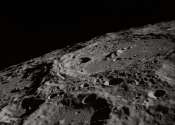
Chinese lunar probe finds water in moon samples
A Chinese lunar probe found traces of water in samples of the moon's soil, scientists have said, as the country pushes its ambitious space program into high gear.
Planetary Sciences
Jul 23, 2024
0
164
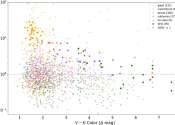
Effects of stellar magnetism could expand criteria for exoplanet habitability
Interest in Earth-like planets orbiting within the habitable zone of their host stars has surged, driven by the quest to discover life beyond our solar system. But the habitability of such planets, known as exoplanets, is ...
Astrobiology
Jul 22, 2024
0
156
More news

Introducing Ramses, ESA's 2029 mission to asteroid Apophis

NASA's Curiosity rover discovers a surprise in a Martian rock

A new explanation for Jupiter's shrinking Great Red Spot

Ground conditions can impact lunar swirls, study finds

Exoplanet-hunting telescope to begin search for another Earth in 2026

Grain boundaries weaken in planetary interiors, research suggests

New ultra-hot Neptune-sized exoplanet discovered

New analysis of Cassini data yields insights into Titan's seas

Bennu asteroid samples unveiled

Here's how AI Is changing NASA's Mars rover science
Other news

Two shark species documented in Puget Sound for first time

New process uses light and enzymes to create greener chemicals

New clam species discovered in South Africa's kelp forest

Raman spectroscopy offers new insights into ionic liquid acidity

New interaction network in endocytosis process discovered

Existence of lunar lava tube cave demonstrated

A hopping robot could explore Europa using locally harvested water

A walking balloon could one day explore Titan—or Earth's sea floor

The CubeCat-4, a new nanosatellite, is already orbiting the Earth

Juice's lunar-Earth flyby: All you need to know

Could resources on Mars support human explorers?

How a warming Arctic is accelerating global climate change















































